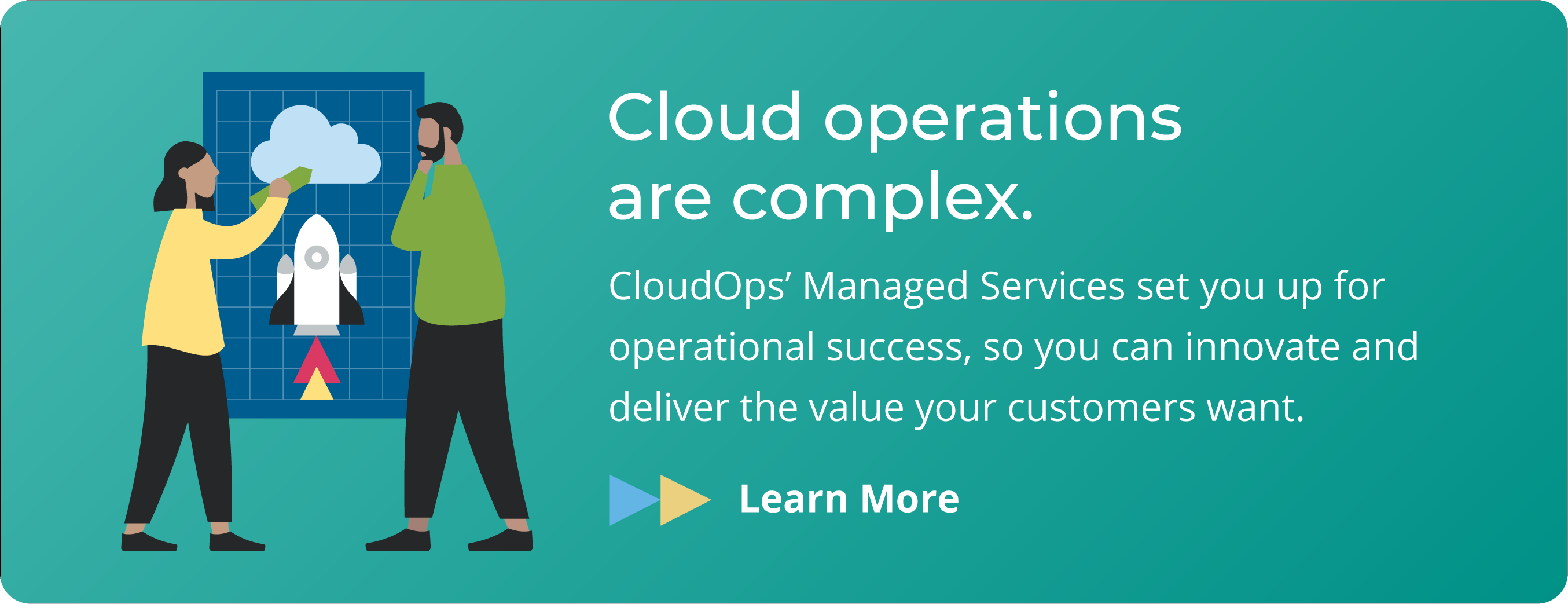How Open Source Enables Us to Own Our Destiny in the Clouds

This blog post was taken from Ian Rae’s talk at Cloud Native Day 2020, which can be viewed here.
At CloudOps, our mission is to enable our customers to own their destiny in the clouds. We’re fighting for their right to participate in an evolutionary journey where they try new ideas, pivot as needed, and iterate when they find a product-market fit. Open source has always been at the core of that mission as it enables the delivery of dynamic solutions that evolve and solve for unique needs. Dynamic solutions have become essential in today’s cloud native world.
Data itself is today, very dynamic. There’s a concept called data gravity. When you start building code on a cloud platform, you have very little data. But data tends to be dynamic in that it creates more data. As the code you build creates more data, it pulls in even more data. Applications, tools, and ultimately users are drawn towards it, wanting to be nearby. Networks are the speed of light, which is a constant and also a very important dynamic in cloud computing.
Technology used to be much more straightforward. It was generally felt that there would always be an ideal architecture, a best state, and a best set of practices to strive for. If you found and adopted the right design, you could leave it alone for a few years until the technology evolved. Changes were infrequent, as the outcome was static and defined by the architecture.
Today static solutions don’t help customers succeed in the cloud. The solution that is right tomorrow will not necessarily be the right solution in one year or even one month. We’re racing into a world where things are becoming increasingly complex, where outcomes are nonlinear, and where the demand for change is the only constant. There is no best state to achieve and uphold.
It’s not architecture but operations that define outcomes. Freedom to innovate and build projects, products, or anything is proportionate to freedom to operate. This means your outcome depends on your ability to continuously improve your operations and build a culture based on experience. To participate in an evolutionary journey, you must maintain a cycle of continuous iterations.
We tried to capture that idea with our logo. You must start somewhere, but the goal is to find yourself inside a virtuous loop, a continuous feedback cycle.
The Infinite Game
Simon Sinek wrote a book called the ‘Infinite Game,’ and it similarly talks about loops and iterations. In life, there are finite and infinite games. In finite games, there are clearly defined rules and parameters for winning. Hockey is an example of a finite game. In contrast, you are playing an infinite game when running a business or building a product that’s delivered as a service. You become part of an infinite continuum where you must constantly iterate.
A few key ingredients are required to be successful at infinite games. The first is a just cause, a purpose to fight for. The second is a team of teams that work together with trust. Thirdly, the existence of worthy rivals (people you respect, are inspired by, and wish to emulate). Fourthly, the courage to lead and take risks, knowing that you might fail. Finally, the existential flexibility required to respond to the fast rate of change happening around you. Open source is the key to unlocking that existential flexibility and participating in an infinite game.
The Cloud Native Ecosystem
There’s an incredible, diverse landscape of open source tools within the cloud native ecosystem. While open source was mostly limited to the Apache Foundation twenty years ago, there has since been a proliferation of foundations and tools. Open source foundations all align themselves with the ultimate mission of open source – the freedom to operate in the face of unexpected circumstances. The four key promises of open source are quality, reliability, costs, and the avoidance of vendor lock-in. Those are key elements of why open source has been so important for us, our customers, and our communities.
It’s important to mention the Open Source Initiative (OSI) as a foundation that has taken leadership around defining the characteristics of open source. The cloud computing industry moves too quickly for us all to wait for the NIST (National Institute of Standards for Technology) to come up with standards before we start building. In today’s cloud world open source is the new standard, and the OSI is the umbrella body that governs these standards.
With these standards, open source communities create lego blocks that allow us to build structures and thriving metropoles that can stand the test of time, outlasting any of the given blocks and players in the market. These underlying blocks can themselves be composed into larger tools and toolsets that allow us to build products that are highly opinionated to serve a particular product-market fit.
There’s an enormous diversity of products that are coming faster and more furious than ever. A thriving metropolis can emerge from the underlying complexity, creating order out of chaos by composing itself of different building blocks (some open source and some not). It has many different actors, and if you’re living in a democracy then enormous freedom to operate.
Kubernetes unlocked the cloud native landscape, which is growing day by day. It’s grown like a Cambrian explosion, which is a type of biological evolution where the majority of organism designs emerge in a very short amount of time at the very beginning. The governance, practices, and community of open source have led to this incredible era of creativity.
Modern hyperscale clouds literally could not exist without open source software. There is no way they could build and operate at scale without being supported by open source. AWS, the first cloud computing platform was built out of open source lego blocks.
Tying this back to the infinite game, we at CloudOps believe open source is the key strategic pillar that unlocks and supports the infinite game, allowing us and our customers to build and innovate in ways that can stand the test of time. Behind open source are people, placing community at the heart of open source.
At CloudOps, we enable our customers to own their destiny in the clouds by building, operating, and transferring value in the application platform. In helping customers find the right solutions, we listen as much as possible to propose the best fit from the amazing array of solutions available at the moment. We rely on lean and agile methodologies, DevOps cultures, and open source tools and toolchains to deliver dynamic solutions that allow customers to participate and excel in their own evolutionary journeys. Contact us to learn how we can help you.

